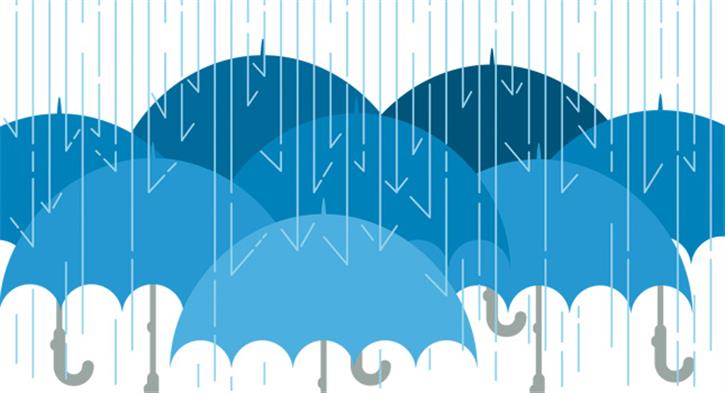

2014 was the warmest year since records began, but it was also the 4th wettest – so harvesting rainwater is a no brainer. Tim Pollard talks about the great business potential of this emerging market.
We British may be the butt of many a joke because of our obsession with the weather, but surely this national characteristic should mean we see rainwater harvesting as manna from heaven?
We can argue until the cows come home about climate change, but there is one irrefutable fact – wasting water, or any other precious resource, makes no sense whatsoever.
The great news is we have the technology and the expertise to save every drop that falls on our homes and, with the Met Office recording five of the wettest years on record since 2000, it looks like we’re unlikely to run dry anytime soon.
Consumers are becoming more aware of the products on the market, so installers will want to keep up-to-date with all the latest technology and steal a march on their competitors.
A rainwater harvesting tank can easily filter and store up to 6,500 litres of clean water, in marked contrast to the humble water butt, which stores around 200 litres. It can easily be plumbed into a customer’s pipework and the rainwater collected used to flush toilets and wash clothes.
A home’s water consumption can be reduced by as much as 40%, according to the Rainwater Harvesting Association and, if people switch to a water meter, it will lower their water bills too.
According to Ofwat, 46% of people in England and Wales now have a water meter and they paid, on average, £100 less for water and sewage services than customers without a meter. The government is also likely to make meters compulsory over the next few years, so it makes sense to encourage customers to change habits now.
Potential savings
Rainwater harvesting dates back to the Romans, and works by taking the rain from roof gutters and storing it in an above ground or underground tank, so that it can be used in place of mains water.
The harvesting system filters out leaves and debris and treats the water so that it can be re-used. It is designed to give homeowners the option to replace elements of their mains water usage with rainwater when it is available.
The amount of water the homeowner can save with a rainwater harvesting system is lower than the 50% savings they could potentially get with a greywater recycling system, because rainwater supply is less certain, and it might be necessary to rely on mains water as a backup during periods where there is little rainfall. However, unlike a greywater system, rainwater systems require little specialist maintenance and the rainwater – as it has never been used to wash food or your body – is likely to contain far less bacteria. This can make it a cheaper and more environmentally-friendly choice.
The other great thing about installing rainwater harvesting systems is that they can be retrofitted as well as installed in newbuilds. There is a harvesting system for every property, no matter how large or small – the only difference is the size of the components used.
What’s more, at a cost of around £3,500, it is certainly a wise investment if your customer is planning to stay in their home for years, or wants to increase its value.
Installing a rainwater harvesting system isn’t going to make homeowners rich over night, but it’s another sensible step on the road to making our homes efficient and keeping more of our hard-earned cash in our pockets.
Tim Pollard is Wolseley UK's head of sustainability.
If you'd like to keep up-to-date with the latest developments in the heating and plumbing industry, why not subscribe to our weekly newsletters? Just click the button below and you can ensure all the latest industry news and new product information lands in your inbox every week.